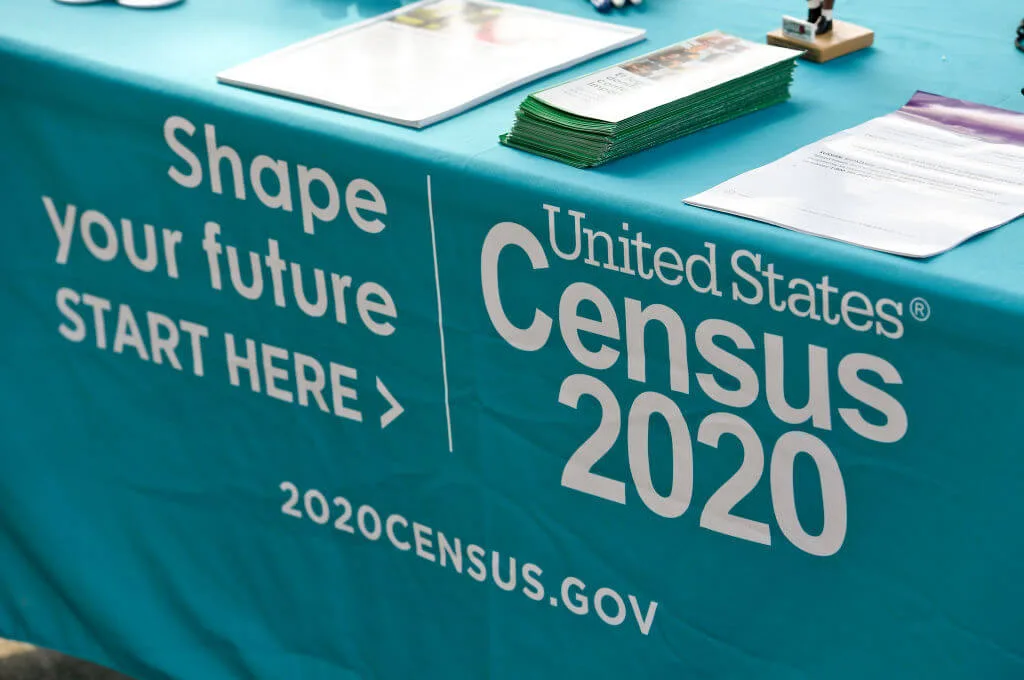
Image via Unsplash
Census officials estimate that the US population could be up to 335.5 million. In 2010, the census count was 308.7 million.
The final 2020 census report won’t be released until next month after President Donald Trump is out of office. However, there are some initial estimations about the US population. On Dec. 15, according to a report by the Census Demographic Analysis, the US population increased by 8.7%.
In 2010, the US Census reported that the US population was 308.7 million people. Today, the US population would be somewhere between 330.7 million to a high of 335.5 million. They estimate the US population will be around 332.6 million people.
RELATED: Seems Like Justice Barrett Disagrees With the Trump Administration Over the Census
The Census Demographic Analysis gathered this information using birth and death records, international migration data, and Medicare records.
Eric Jensen, the bureau’s senior technical expert for Demographic Analysis, told NPR that they did consider COVID-19 deaths, even from people who died from COVID-19 before April 1.
“There weren’t a lot of COVID deaths relative to what we see later in the year, but we did include COVID deaths in our estimates,” Jensen told NPR.
Other Census Findings in Order of Low, Middle, and High Estimates:
- The percentage of the US population estimated to be Black alone was 13.5, 13.7, and 13.9, respectively.
- The percentage of the population estimated to be Black alone or in combination with other races was 14.9, 15.1, and 15.4, respectively.
- For the population under age 30, the percentage estimated to be Hispanic was 23.0, 24.6, and 26.0, respectively.
The US population’s median age was 38.4 on the low end and 38.7 on the high end of the estimates.
Those estimates and others are expected to help the Census Bureau understand its official data quality, which is still being analyzed and could help determine whether minority groups and other populations are properly counted.
The final census count will determine the apportionment of seats in the US House of Representatives and how more than $1.5 trillion in federal funding is distributed. Demographic Analysis data can tell the Census about errors for a specific age, sex, race, and Hispanic origin groups at the national level, Census officials said.
Some experts and census watchdogs have raised concerns over the census count, which has seen its share of challenges this year related to the coronavirus pandemic. Advocacy groups have argued in court that a push by the Trump administration to end the count early could leave some populations undercounted.
RELATED: Justice Sotomayor Stood Alone in Opposing the Early Census Shutdown
The Census Bureau switched its deadline for wrapping up the count from the end of July to October. It also extended the deadline for turning in apportionment numbers from the end of December to the end of next April, giving bureau statisticians five months to crunch the numbers.
However, in late July and early August, officials at the Commerce Department announced field operations would finish at the end of September. The apportionment numbers would stick to a congressionally mandated deadline of Dec. 31.
But documents leaked to the House committee that oversees the Census Bureau suggest the apportionment numbers won’t be ready until after Jan. 20, when Trump leaves office, and President-elect Joe Biden moves into the White House. The Census Bureau has acknowledged the discovery of data irregularities in recent weeks that put the Dec. 31 deadline in jeopardy.
The Associated Press contributed to this story.
Politics

Teamsters and UPS Reach Tentative Deal to Avoid Strike, 340,000 Workers to Get Raises
The tentative deal represents a huge win for full- and part-time UPS Teamster workers, who would get significant pay raises and better working...



One Republican Senator Is Blocking 265 Military Promotions, Leaving the Marines Without a Confirmed Leader
Sen. Tommy Tuberville's decision means these military officers are not getting the pay raises they’re owed, cannot move their families to wherever...
Local News



Teamsters and UPS Reach Tentative Deal to Avoid Strike, 340,000 Workers to Get Raises
The tentative deal represents a huge win for full- and part-time UPS Teamster workers, who would get significant pay raises and better working...



One Republican Senator Is Blocking 265 Military Promotions, Leaving the Marines Without a Confirmed Leader
Sen. Tommy Tuberville's decision means these military officers are not getting the pay raises they’re owed, cannot move their families to wherever...




